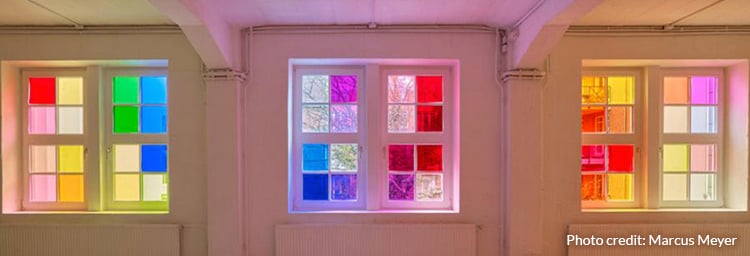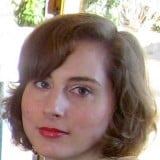Margaret Honda is an experimental filmmaker and artist whose work examines the role of materials and their interaction with the viewers of her art. In her work - Film - Honda reinterprets lighting gels by removing them from their context and usage on a film set to concentrate on the objects themselves. Presented in three different exhibitions thus far, Film showcases an entire range of Rosco filters mounted on the windows of an exhibition space in order to focus on their individual physical attributes.
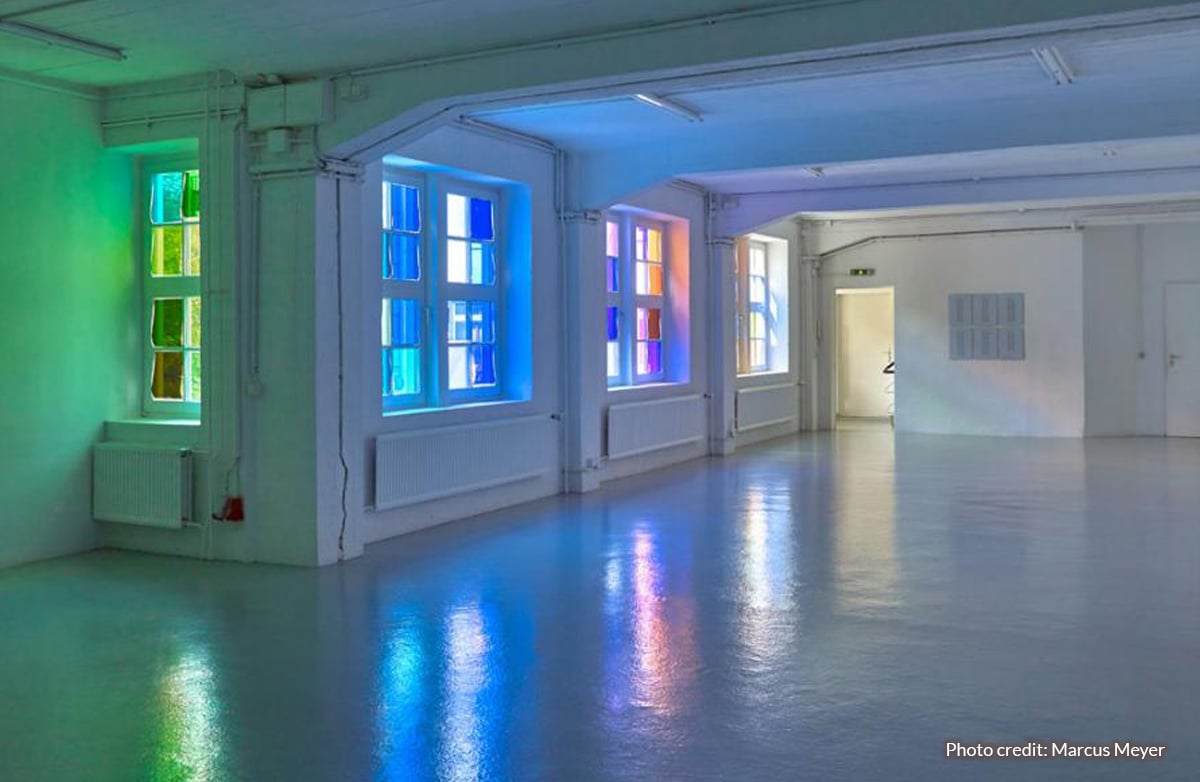
“Using cinematography lighting gels, ambient light and existing architecture, Film is a constantly changing projection that begins on the first day and ends on the last day of an exhibition,” says Honda. “Installed on the windows of an exhibition space, the gels’ multiple colors and densities alter the view of the outside world while also transforming the light inside the space.”
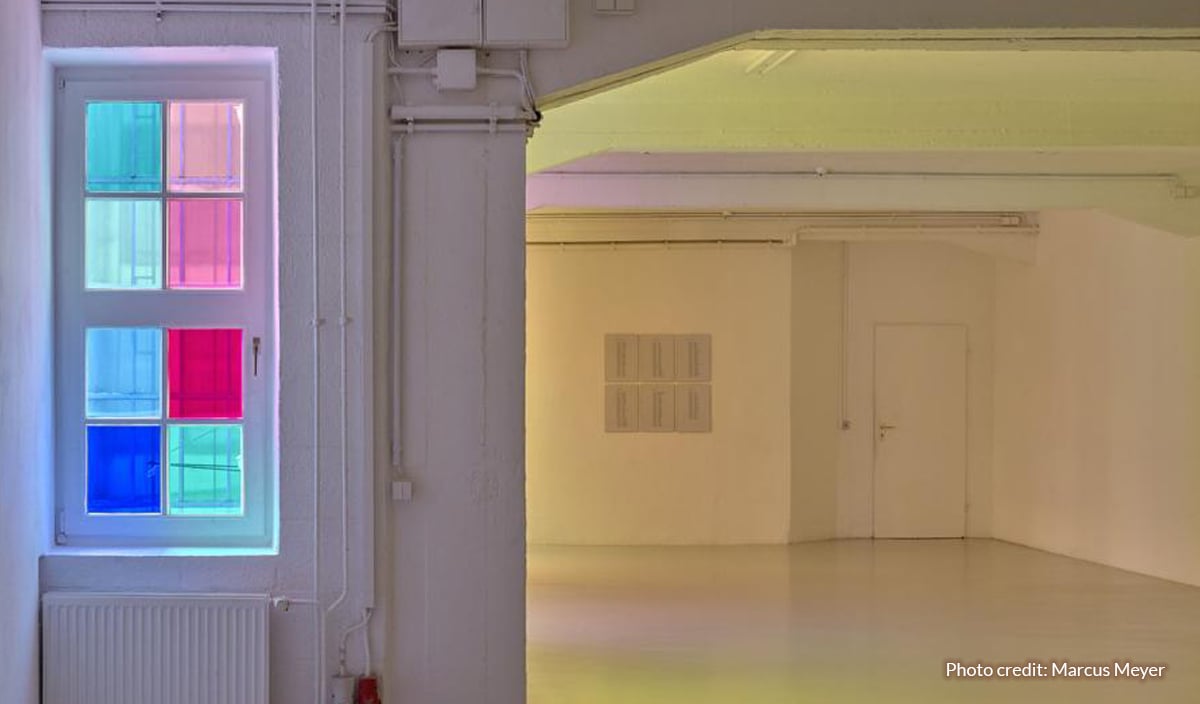
Each filter range’s numbering system becomes an intrinsic part of the Film exhibition. The filters are installed in vertical rows according to its gel number and they’re changed based on a predetermined number of days. Therefore, the colour combinations on the windows are the result of the number of gels, the number of windows in the space and the number of days in the exhibition.
“Film (Künstlerhaus) presented in the exhibition “Margaret Honda: An Answer to ‘Sculptures’”
For Film at Künstlerhaus in Bremen, Germany, Margaret Honda used the entire range of 324 e-colour+ filters to cover the gallery’s fifty-six windowpanes. Since only fifty-six filters could be installed at the time, the entire set was divided into six “reels” of color filter that were ordered numerically – each of which was on view for sixteen days. The work changed not only with each different reel, but also with the shifting daylight conditions throughout the day and season.
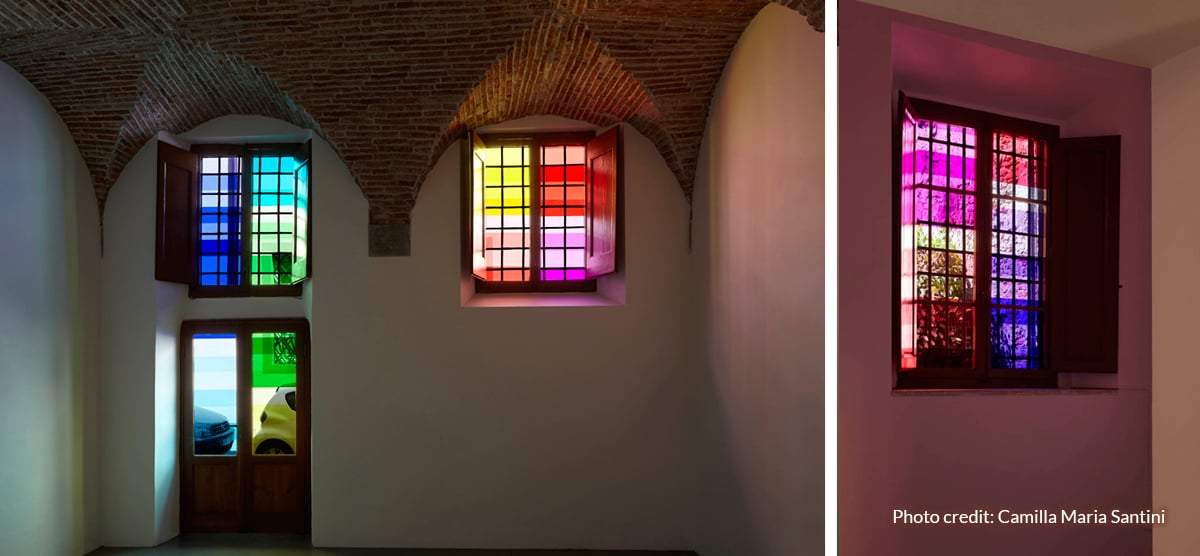 “Film (SpazioA)" presented in the exhibition “Waiting for the Sun”
“Film (SpazioA)" presented in the exhibition “Waiting for the Sun”
Film at SpazioA in Pistoia, Italy, Honda used the complete set of Rosco CalColor filters. The 33 CalColors were applied on eight windows in 66 equal-sized gel cuts that were overlapped to produce density and colour combinations consistent with their normal use. Working in numerical order, the sequence began with CalColor 15 Blue, half of which overlapped with the next filter, CalColor 30 Blue, to produce a “45 Blue,” followed by the bare 30 Blue that halfway overlapped with the next 60 Blue, and so on. In the end, the windows were filled with a CalColor density-pattern that reads: 15, [45], 30, [90], 60, [150], 90. The final windowpane ended with CalColor 90 Lavender overlapping another cut of CalColor 15 Blue to insinuate the loop of colours begins again.
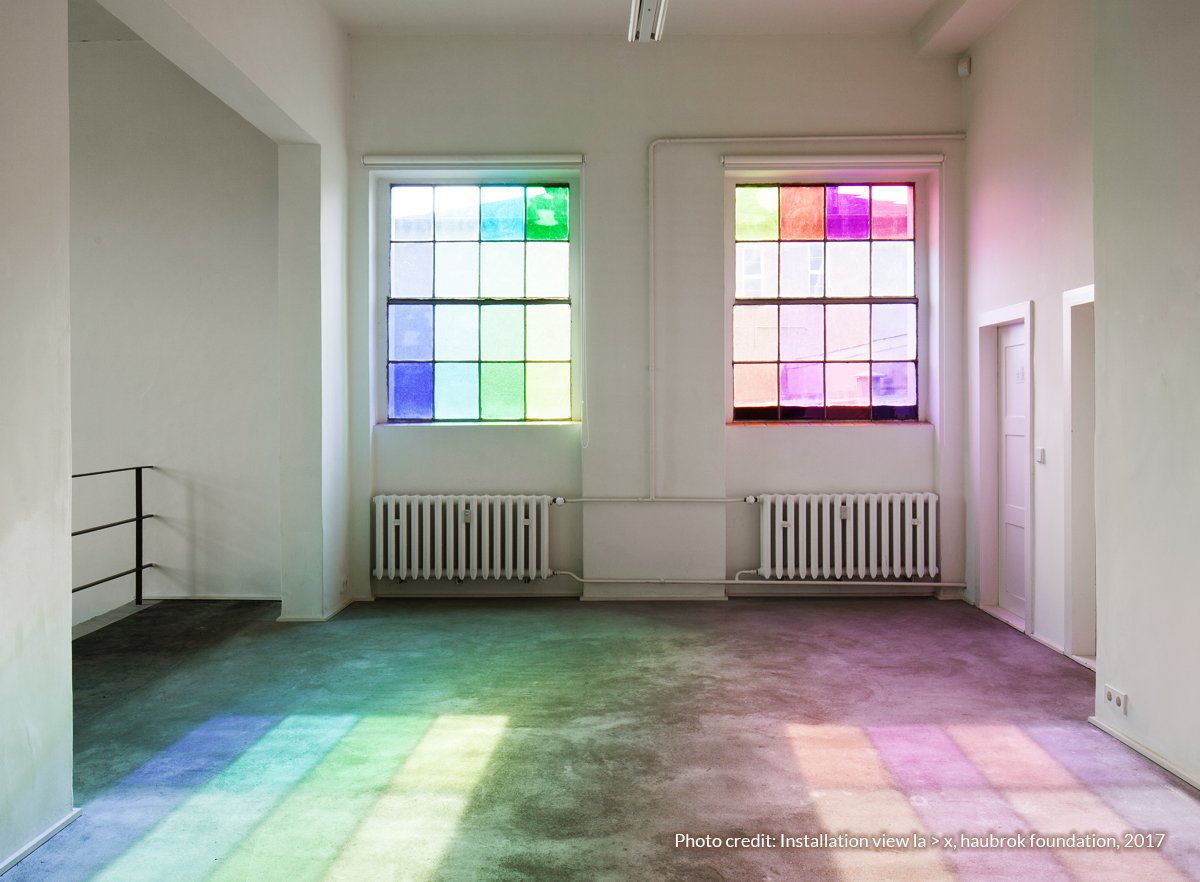 “Film (FAHRBEREITSCHAFT)" presented in the exhibition “la > x”
“Film (FAHRBEREITSCHAFT)" presented in the exhibition “la > x”
Honda’s most recent version of Film in Berlin, Germany also showcased the 33 CalColor filters – this time on 32 windows inside the FAHRBEREITSCHAFT arts centre. The gels are numerically installed, one per windowpane, according to the CalColor numbering system. The set is divided into two reels – reel one representing 97% of the work’s overall length (32 of 33 filters) on view for 167 days, and reel two representing 3% of the work’s length (the 33rd filter – CalColor 90 Lavender) on view for the final five days. The FAHRBEREITSCHAFT show has been extended until March. We'll update the post with a photo of the final, single-filter reel once it closes.
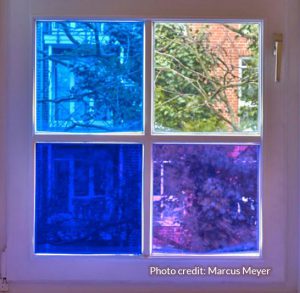 To learn more about Margaret Honda’s work visit her website margarethonda.com. For more information about the colour filters Honda used in her Film exhibitions, explore the Rosco myColor web app.
To learn more about Margaret Honda’s work visit her website margarethonda.com. For more information about the colour filters Honda used in her Film exhibitions, explore the Rosco myColor web app.

